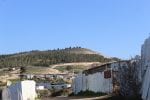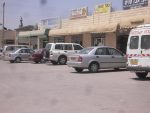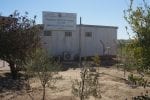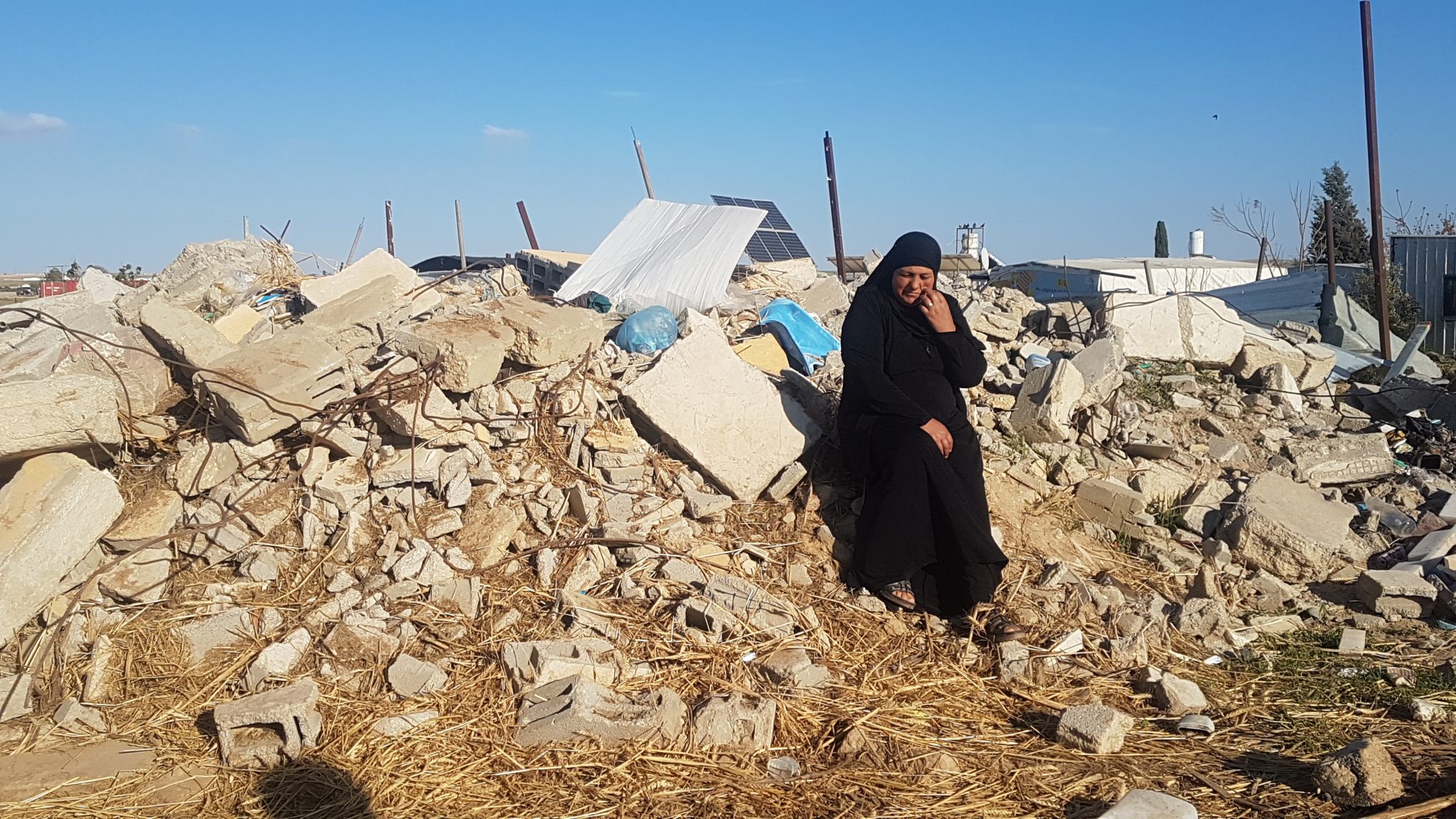
Negev Coexistence Forum for Civil Equality
פורום דו-קיום בנגב לשוויון אזרחי
منتدى التعايش السلمي في النقب من أجل المساواة المدنية
The Arab-Bedouin Community in the Negev-Nagab – A Short Background
The Arab Bedouin indigenous people of the Negev/Nagab – A Short Background
In 1948, on the eve of the establishment of the State of Israel, about 65,000 to 100,000 Arab Bedouins lived in the Negev/Naqab region, currently the southern part of Israel. Following the 1948 war, the state began an ongoing process of eviction of the Arab Bedouins from their dwellings. At the end of the 48 war, only 11,000 Arab Bedouin people remained in the Negev/Naqab, most of the community fled or was expelled to Jordan and Egypt, the Gaza Strip and the Sinai Peninsula. During the early 1950s and until 1966, the State of Israel concentrated the Arab Bedouin people in a closed zone known by the name ‘al-Siyāj’ (سياج) under military administration. In this period, entire villages were displaced from their locations in the western and northern Negev/Naqab and were transferred to the Siyāj area.
Under the Planning and Construction Law, legislated in 1965, most of the lands in the Siyāj area were zoned as agricultural land, ensuring that any housing construction would be deemed illegal, including all those houses already built which were subsequently labeled “illegal”. Thus, with a single sweeping political decision, the State of Israel transformed almost the entire Arab Bedouin collective into a population of ״lawbreakers״, whereas the Arab Bedouins’ only crime was exercising their basic human right for adequate housing. In addition, the state of Israel denies any Arab Bedouin ownership over lands in the Negev/Naqab. It does not recognize the indigenous Arab Bedouin law or any other proof of Bedouin ownership over lands.
Nowadays, about 305,000 Arab Bedouins reside in the Negev/Naqab area, in three types of settlements: about 35 unrecognized villages; 7 governmental planned townships; and 11 newly recognized villages. While the state’s urbanization process very much successful, with more than a half of the community residing today in planned townships, tens of thousands of Arab Bedouin citizens still live in unrecognized villages.
The Unrecognized Villages | The unrecognized Arab Bedouin villages in the Negev/Naqab are about 35 villages that the state of Israel does not recognize and refers to them as a “diaspora” or “illegal villages”. Amongst these villages are some that are historic since they existed in their location before the establishment of the state of Israel. Other villages were internally displaced during the 1950s into the Siyāj area. The state does not recognize the historical villages, nor does it recognize the internally displaced villages.
The residents of the unrecognized villages get very little governmental services and in most cases no services at all. In most of the villages there are no schools, kindergartens or health clinics. There is hardly any infrastructure, including electricity, running water, paved roads and sewage disposal systems. These villages have no representation in the different local government bodies and are mostly unable to participate in municipal elections. Consequently, the populations of these villages are reduced to severe hardship and poverty, compounded by the fact that they cannot access their basic civil, political, and social rights.
Over the years, Israel has employed a variety of mechanisms to displace residents of unrecognized villages into planned townships, including the establishment of special government authorities for this purpose. Planning policies have ensured that villages remain unrecognized and are subjected to house demolitions and legal penalties and that basic infrastructure and services continue to be denied to these localities. While these policies have proved successful to some extent, in most cases, the unrecognized villages remain standing.

Photo:ʾAmal ʾAbū al-Qiʿān, ʿAtīr
The Governmental Planned Towns | In the late 1950s, the state began planning the urbanization of the Arab Bedouin indigenous community. By concentrating the Arab Bedouin in delimited urban areas, Israel aimed to strengthen its control over the community, prevent the Arab Bedouin villages from growing, and cut infrastructure costs. In 1966, when the military administration ended, the urbanization process began. The State established seven Arab Bedouin townships, mostly within the Siyāj area, that promised residents modern services in return for their settlement in organized urban lots. The first Arab Bedouin township, Tal as-Sabaʿ, was established in 1969, and until the 1990s, six more townships were established. All seven Arab Bedouin townships are characterized by deprivation, high unemployment, crime, and social tension, as well as insufficient services. Until the mid-1990s, Israeli policy had endeavored to concentrate the entire Arab Bedouin indigenous community of the Negev/Naqab within these seven townships. This process was forced and completely disregarded the Arab Bedouin traditional way of life, which is based on agriculture and rural communities.

Photo: NCF’s staff, Rahaṭ
The Recognized Villages | As of 1999, the state of Israel, in various governmentresolutions, decided to recognize 11 Arab Bedouin unrecognized villages in the Negev/Naqab. This was allegedly a fundamental change after years in which the only settlement option for the Arab Bedouin community was forced urbanization. Yet, nearly 20 years later, there is no significant difference between these villages and the villages which remained unrecognized. In most of the recognized villages, there is no planning, so their residents cannot get building permits; the policy of house demolition continues; and infrastructure of water, electricity, sewage disposal, and roads are still, in most cases, unavailable to the residents.

Photo: Michal Rotem, Umm Batīn
The House Demolition Policy and the Housing Crisis | The central Israeli policy towardthe Arab Bedouin indigenous community in the Negev/Naqab is an ongoing policy of house demolition. Despite the villages having been inhabited for years, in 1965, most of the houses located in the unrecognized villages were retroactively deemed illegal. Since then, it has been impossible for the residents of these villages to acquire building permits as the state considers their villages to be illegal. Therefore, community members cannot build or repair their houses legally, and those who choose to do so face demolition and homelessness. Far from enough to meet the needs of the broader Arab Bedouin population, the seven governmental-planned townships are already unable to accommodate their own natural growth. The recognition of 11 villages has likewise failed to remedy the Arab Bedouin housing crisis.
House demolitions do not occur merely in unrecognized villages, as many of the demolitions occur in townships and newly recognized villages. Despite the housing crisis, there is a drastic increase in house demolitions in the Negev/Naqab area each year. Instead of trying to solve this crisis, state authorities mainly focus on expanding it, demolishing thousands of Arab Bedouin houses, crops, and other structures every year.

Photo: Tal Avrech, az-Zaʿarūrah
Land Ownership | Recent ruling by the Israeli Supreme Court (al-Uqbi verdict, May2015) makes it almost impossible for Bedouin citizens to prove ownership over lands in the Negev. While in the 1970’s, the state allowed Bedouins to claim their ancestral lands yet later decided to freeze this process, during the 2000s, the state attorney started filing counterclaims over the same lands, demanding to register them as state lands, with a 100% rate of court winnings in such cases.
Although living on and cultivating these lands for hundreds of years, the state of Israel does not recognize Bedouin ownership over lands in the Negev. The slight moment in which the state does recognize such ownership is when a Bedouin decides to give up his land, then, the state gives ridiculous compensation and registers it as state land.
In the al-Uqbi ruling, Miriam Naor, the Supreme Court President stated: “I will advise my colleagues to reject the claims of the appellants in everything relating to the rights they purchased on these lands whether by means of the traditional Bedouin land laws, by virtue of Ottoman and Mandatory Land Laws, or by the laws of honesty, International Law or Basic Laws […] in light of these conclusions, the appellants are not entitled to compensation or land exchange under the Acquisition of Lands Law because of the expropriation of the said lands״ (HCD 4220/12, article 83).

Photo: Nūra aṣ-Ṣaġāyrah, Rakhamah
Summary | The Arab Bedouin community in the Negev/Naqab is indigenous to the area. Yet, the state of Israel does not recognize it as such. Although comprising about 34% of the population of the Negev/Naqab, the Arab Bedouin population is still neglected by the state in all spheres of life. Instead of recognizing the Arab Bedouins as indigenous people, allowing them to practice their traditional way of life in their villages, and supporting this disenfranchised community, the state of Israel keeps on fighting against its own citizens.

 Youtube
Youtube
 Twitter
Twitter
 Facebook
Facebook